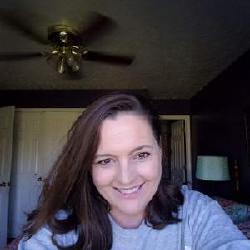In February 2017 I was diagnosed with an acoustic neuroma on my left side. An acoustic neuroma, also known as a vestibular schwannoma, is a rare benign (non-cancerous) growth that develops on the eighth cranial nerve. This nerve runs from the inner ear to the brain and is responsible for hearing and balance (equilibrium). Common symptoms include ringing in the ears (tinnitus) and dizziness or imbalance. The symptoms of an acoustic neuroma occur from the tumor pressing against the eighth cranial nerve and disrupting its ability to transmit nerve signals to the brain. An acoustic neuroma is not cancerous (malignant); it does not spread to other parts of the body. The reason an acoustic neuroma forms is unknown. Acoustic neuromas are estimated to affect about 1 in 100,000 people in the general population and are listed on the National Organization of Rare Disorders. It is considered a non-cancerous brain tumor.
Because of the size, shape and location of my tumor the doctors and I are in agreement that the best treatment option for me is surgical removal of the tumor by the translabyrinthine approach. It is the most direct route to the tumor site.
The incision for this surgical approach is located behind the ear. It involves removing the mastoid bone (the bone behind the ear) and the bone of the inner ear, allowing excellent exposure of the internal auditory canal (
https://www.anausa.org/component/glossary/Glossary-1/I/Internal-Auditory-Canal-17/) and tumor. This also results in permanent and complete hearing loss in that ear. This approach facilitates the identification of the facial nerve in the temporal bone prior to any removal of the tumor. The surgeon has the advantage of knowing the location of the facial nerve prior to tumor dissection and removal. Any size tumor can be removed with this approach. A second, small incision typically is made in the abdomen to harvest fat. This fat is added during surgery and is the substance that is used to prevent a cerebral spinal fluid (CSF) leak after the tumor is removed. This approach affords the least likelihood of long-term postoperative headaches.
The surgery is intensive and I am told it will last twelve to fourteen hours. It is so involved because of all the nerves involved. The most likely side effect is facial nerve weakness on my left side. But as with all surgeries there are also more serious risks.
This web page is designed for me to give updates to family and friend, to coordinate help and support and for me and my immediate family to receive encouragement. I can’t really say that I’m excited about the journey but it is helpful to know that I’m not taking it alone.
I serve a mighty God and I know that He is bigger than any challenge will face. Right now, during surgery and throughout recovery the thing I need from you most is your prayers. Thank you in advance for your prayers and support.
I will update this as I can and when I cannot I have a couple of designated helpers to update the site.
As ever,
Tachelle Burgin


